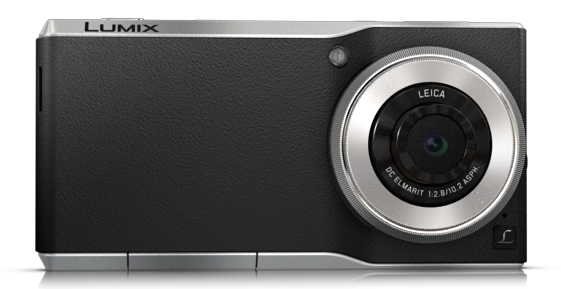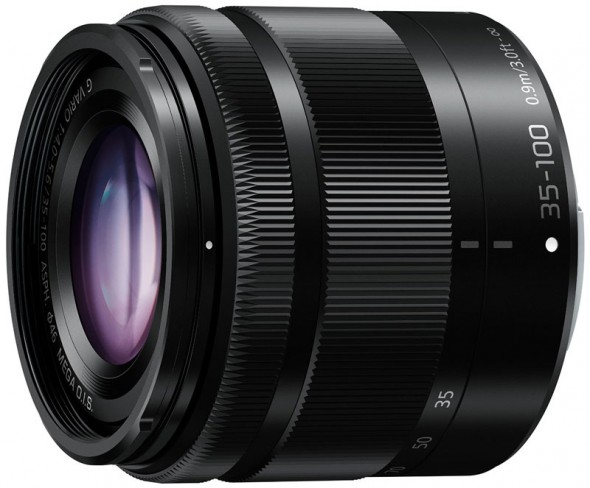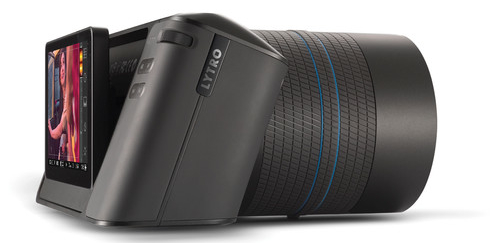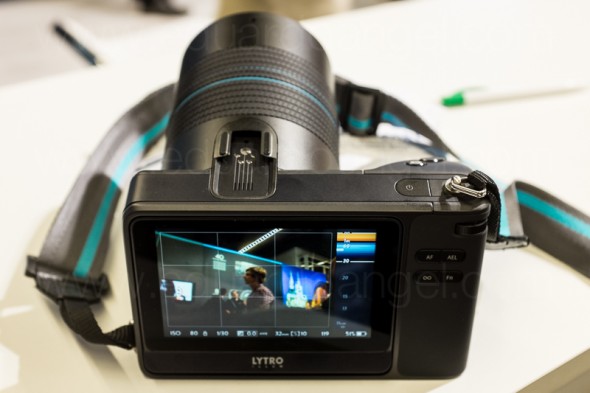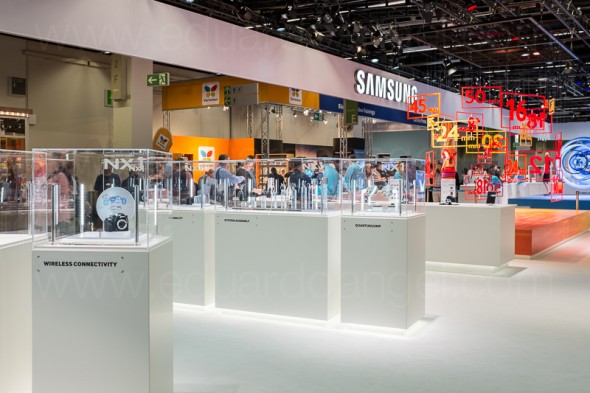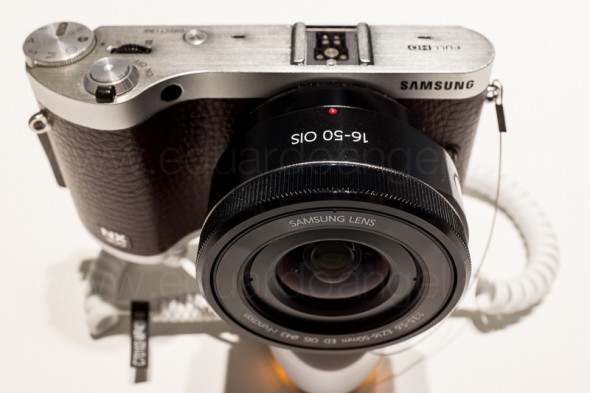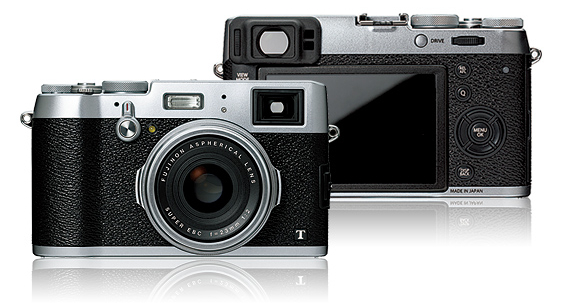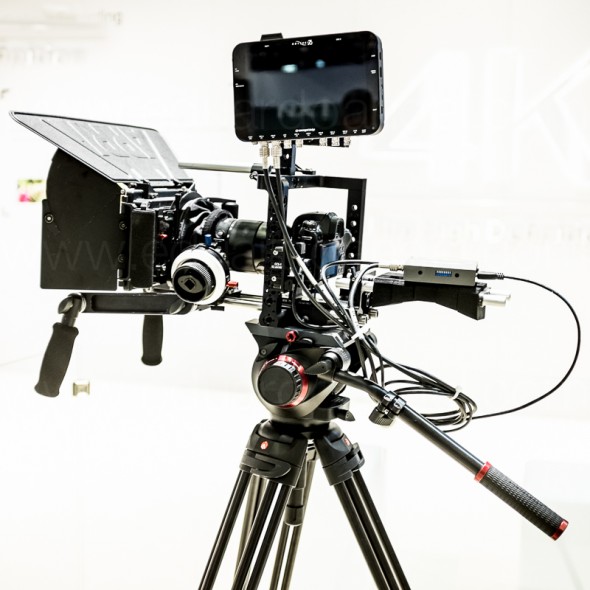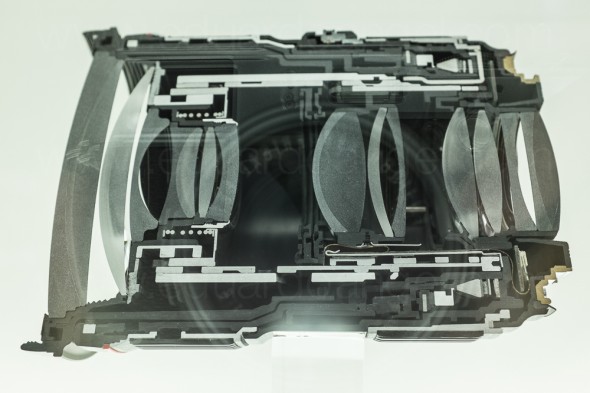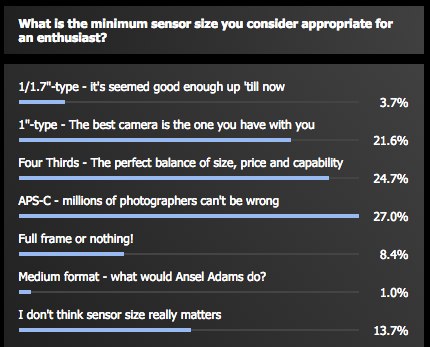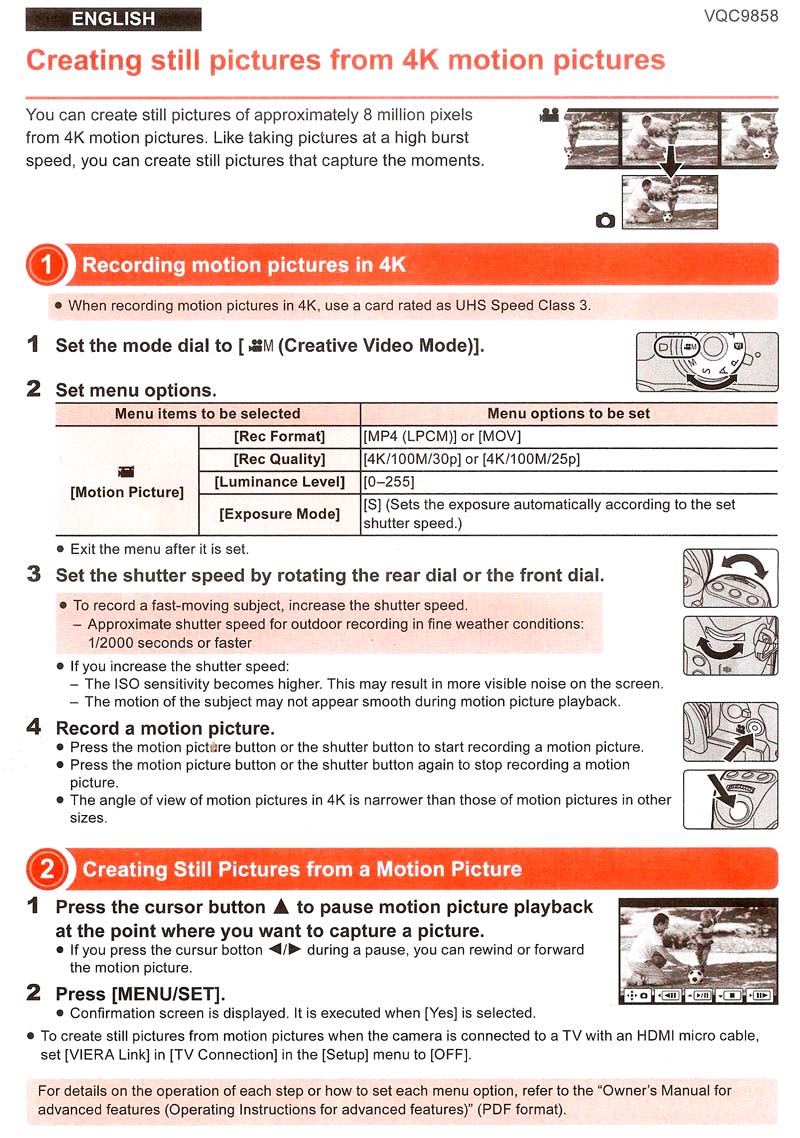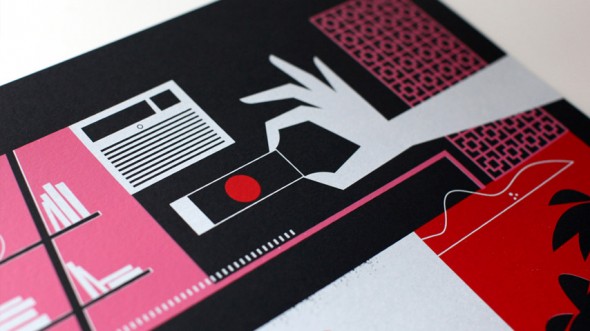Video

Photokina, after the dust has finally settled.
It feels like six months but it’s been only a month since we had the great privilege to once again attend the largest and arguably most important trade show in the photo industry: Photokina.
One month on and the dust has settled, sample photos and videos are popping everywhere, most specs are now confirmed, and rumor websites have moved on to tell new tall tales.
This time I found the show less crowded and less exciting than previous years. Perhaps it’s because most manufactures now announce products before, not during, trade shows, and the expectation and surprise factor is quickly ebbing away. But there are always interesting surprises, especially in the “Chinese” hall, and it is also nice to be able to touch the toys everybody is drooling over.
The following is my very personal, unscientific, but also unbiased list of products that got my attention, in no specific order.
• Canon offered a mind-blowing low light test. If I remember correctly, they called it “See in the dark.” They used an EOS C300 and a 7D Mark II to shoot some props in a darkroom. There were only a few tiny light bulbs covering the scene. When I entered the room I couldn’t even see the cameras, but somehow the cameras saw the props and were able to get a decent exposure. I believe the 7D Mark II was set at 12,500 ISO and the image on the camera’s monitor looked usable but not amazing. The C300 was set at something like 25,000 ISO and the image on an external monitor looked decent. Other than that, nothing else was remarkable at the Canon booth.
The Canon 7D Mark II is currently available for pre-order from Amazon and B&H.
• Panasonic consistently surprises me. The CM1 is something I have NEVER seen before, and I’m very surprised with the lack of coverage this amazing piece of technology has received.
Take a Nexus 5, iPhone 6, or Lumia 1320, stick a tiny and beautiful Leica 28mm F2.8 Elmarit DC lens coupled with a 20MP MOS sensor, a crazy fast Qualcomm MSM8974AB 2.3GHz Quad-Core running on Android 4.4 (Kit Kat), then add a super user-friendly interface with all kinds of clever and customizable options including Manual Exposure setting, 1920 x 1080 video, and just for fun throw in Wi-Fi, Bluetooth, NFC, and GPS. Did I mention that this CELL PHONE also captures 4K video? I’m still processing that too! Simply mind blowing. Forget the iPhone 6 or Nexus 6. The CM1 will be my next camera/phone.
Complete specs for the Panasonic CM1 are available here.
Panasonic’s ultra-compact Lumix 35-100mm f/4 lens, equivalent to a 70-200mm on a full frame camera, is incredibly small and lightweight (0.48 pounds), and it’s about 75% the size of the already tiny (and excellent) Panasonic Lumix 12-35mm f/2.8 ASPH X lens (68.0 x 74.0 x 1.0 inches and 0.7 pounds). Regardless of its size, it comes with O.I.S. (Optical Image Stabilization) and it is fully compatible with high-speed AF cameras up to 240 fps. That should do it…
The Panasonic ultra-compact Lumix 35-100mm f/4 lens is currently available for pre-order from Amazon and B&H.
• Light field photography has been on my radar for a while and we finally had a chance to play with a Lytro camera. The ability to focus images after they have been captured, change the perspective, increase the sharpness, and create 3D images or presentations are some of the many potential developments. I had a chance to play with Lytro’s Illum camera, and while I find the technology amazing, the software still needs some serious work. Here are the camera’s specs.
The Lytro’s Illum is currently available now from Amazon and B&H.
• I simply don’t get it. Samsung released several interesting products and the booth was almost empty. And, that’s the GOOD news. The company reported earlier this month a 60% drop in operating profit for Q3 2014.
I asked a Samsung staff member what the unique features were on the brand new NX1. He replied that it has a 28MP APS-C CMOS sensor, it can record 4K and UHD video using H.265 codec, it offers a weather-resistant magnesium alloy body… I interrupted and asked him this: if I’m debating over a Nikon D7100, a Canon EOS 7D Mark II, a Panasonic GH4 or a Fujifilm X-T1, why should I consider the NX1? Picture a deer caught in the headlights. His answer was, “I guess I wouldn’t consider the NX1.”
Wow! And that’s exactly how I feel about Samsung’s flagship camera. Nice, decent specs, but unremarkable overall. An additional potential issue is Samsung’s relatively new NX mount, so you can use Samsung’s proprietary lenses, or other brands’ with an adapter, which requires an additional investment.
Some other quick notes I took while playing with the NX1: The 3″ tilting Super AMOLED touchscreen display works well. Very fast shutter, nice colors, the 85mm f/1.4 is very sharp, pretty standard menus, kinda slow AF tracking, interesting built-in color corrections and presets. The lenses come with “i-function” which allows you to control them from the touchscreen.
In case you are curious, the Samsung NX1 is currently available for pre-order from Amazon and B&H.
• We saw some of the coolest developments at Fujifilm, but for some reason not even Fuji’s staff knew about them. There are two new services: Magic Video Print and Magic Video Print Share, which according to the company will be available in the “1st half of 2015”. Not to be confused with Fuji’s Instax Printer (also available here), which is basically a portable printer that allows users to print smartphone photos on the go.
Magic Video Print is basically a software that extracts 10 still images per second from videos, analyzes faces, focus, brightness, and other characteristics, and then recommends approximately 20 images from the video to be printed. That’s cool.
But, what is REALLY cool is Magic Video Print Share. Using Augmented Reality voodoo, the technology allows users to share prints extracted from video footage. Using a smartphone or tablet (and soon, I imagine, a smart watch) to “scan” the printed image, the original video with sound is replayed automatically on the scanning device. Are you finding it hard to imagine all of this? I don’t blame you. I saw it and couldn’t believe it.
Here’s a quick cellphone video:
Now, the potential for this is huge. Proud grandparents framing their favorite images and watching the kids play? Wedding images that contain laughs and special songs? Awesome!
Oh yeah, and Fuji also announced the new X100T (here are the specs), but I LOVE my X100S so much (full hands-on review) that I simply don’t care.
In case you do, the Fuji X100T is currently available for pre-order from Amazon and B&H.
A few more cool things we saw during the show:
Some Post-Photokina thoughts
Every year and every trade show comes with a set of buzzwords and catch phrases. Sometimes it seems that manufactures have a pre-show meeting and agree to only talk about two or three topics. Remember 3D? You get my drift. The flavors of the year have been 4K, WiFi, GPS, Curved Sensor, and even CGI.
Image capturing and recording devices, be it stills or motion, have become much more multifunctional. Photographers can now handle many tasks with a single device. Because of this, over the years I’ve been happy to see (at WPPI, NAB, Photokina, and most likely at the upcoming PhotoPlus) that the focus has shifted (slightly) from the megapixels war to perhaps more important topics like image editing, archiving, presentation, and file sharing.
For the longest time, the 24 x 36 has been considered the “gold standard” for sensor formats, but in the past couple of years, the clear improvements on Micro Four Thirds systems have blurred the lines between professional and non-professional camera equipment. Is the $500 GoPro Hero4 capable of 12MP stills, and 4K 30 fps, 2.7K 50 fps, 1080p 120 fps video LESS professional than a three-year old DSLR? Good example: even the Medium Format systems are shrinking with the Pentax 645z.

Take a look at this recent poll on DPReview:
So, what’s coming next? Nobody can predict the future, but the current trends seem to give us some clues on what to expect:
• Newer systems are becoming smaller and extremely powerful, with the incredible Novo camera, Panasonic’s GH4 and Sony’s a7R.
• Cheaper and more efficient processors, faster transfer rates and huge but increasingly cheaper storage devices will enable higher quality videos in 4K or higher resolution. Ultra fast frame rates, continuous-tracking, internal RAW processing and perspective correction, Wi-Fi, Bluetooth, NFC, and GPS will become standard features.
• Cameras and photo and video hardware will be easier to operate, will require less people to do so, and they will be controlled wirelessly via tablets and smartphones. Redrock Micro’s One Man Crew, the heavy but amazing DJI’s Ronin and Syrp’s Genie are just but a few quick examples. With the complete separation of camera support and camera operation, the camera can transition to and from cranes, hand-held, or flying drones with no significant effort from the comfortably seated operator.
• Lenses will continue to improve, not only in resolution and speed, but also with much better internal optical image stabilization for action shooters and filmmakers. Good examples of lenses that are setting the path are Sigma’s 18-35mm f/1.8 DC HSM and Sigma’s 120-300mm F2.8 DG OS HSM, two of the most amazing lenses I’ve ever used.
• For monitors, I expect to see higher resolutions, better contrasts and expanded gamuts, but also the possibility to use smaller screens as color-accurate external monitors and viewfinders while also controlling the capturing device.
• We have talked about pulling stills from video for a while, and RED shooters have been able to do this for a while, but the tools to do it quickly while keeping as much data as possible are still lacking. This is about to change; Panasonic’s “4K Photo” system allows users to pull images (16:9, 4:3, 3:2 and even 1:1) with complete EXIF data from 4K footage captured on a number of devices, including the Panasonic GH4, the super compact FZ1000, the high-end HC-X1000, the tiny LX100 and even the CM1 camera phone!
Fuji’s Magic Video Print Share is a huge leap forward and I expect other manufacturers (hear that Adobe?) to quickly jump in the ring.
Video
The Future of Digital Photography is written. Now.
When you get a Panasonic GH4 and open the box, among the typical accessories, manual, camera strap, etc you find this little pamphlet. Most people, I’m sure, won’t even notice it. But I don’t think I have ever seen the future of photography so clearly written, literally.
Shoot 4K video with a tiny, $1,700 camera. Press a couple of buttons. Done.
New companies are offering interactive and personalized video ads using geotargeting and service-provider data to display relevant prices, promotions, and specific product information. Traditional companies are also keeping up. The New York Times recently recruited almost 20 new staff members to work on new news formats including video and interactive media.
Once software developers catch up, this is exactly how we will shoot stills. Pulling frames, in two steps or less. Not one at a time. This is both scary and fascinating depending where you sit.
Video
The Future of Storytelling is Transmedia.
What is the future of storytelling? We’ll begin our day with a story on our phone. On our subway ride to work a new character will be added to the story and we’ll learn all about him on a tablet computer. At lunch we’ll catch up with the character’s newest adventure on our office computer via Facebook. Later in the day the story takes an unexpected turn—and we’ll learn about it from a digital billboard. Before going to bed we’ll plant the seeds for tomorrow’s developments while playing a video game on our television. This is transmedia—the future of storytelling. (more…)
Photography
The New York Public Library designs the future.
The New York Public Library is doing an outstanding job incorporating education, technology and design into their present and future plans. If you share a hope for a better education system and a love for digital learning solutions as we do, then this should strike your interest.
• A new plan, designed by the great British architect Norman Foster, will create a state-of-the-art circulating library within the main branch (which is called the Stephen A. Schwarzman Building), a 101-year old landmark in New York City. Foster’s design will open spaces currently closed to the public, creating a four-level atrium, with bookshelves, sitting areas and desks, and will incorporate the books, programs, and services now found at the “heavily used but seriously deteriorating” Mid-Manhattan Library across Fifth Avenue. The project, expected to be completed in 2018 will cost $300 million. Half of that will come from the city and the rest from donations and the sale of properties. Long term, the project will save $12 to 15 million from the library’s tight yearly budget according to Anthony W. Marx, the library’s president.
After the renovation, which has been somewhat controversial, the building is expected to receive 4 million visitors per year. It will be open seven days a week, most days until 11 p.m. Incredibly enough, the branches will remain open throughout construction! Check out the 3D renderings and benefits for project below (it does not have sound, your speakers are fine!):
Benefits after the renovation:
- More public library space than is currently available in all three locations combined
- Open 7 days a week, 12+ hours most days
- Books and DVDs to browse and check out
- Natural light and beautiful views onto Bryant Park
- New spaces for children and teens
- Classrooms, computer labs, expanded research areas
- Business Research Center and Job Search resources
- Expanded spaces for scholars and writers
- Research materials properly preserved beneath Bryant Park
- Savings that can be spent on new librarians and curators and more books
Click here to keep reading (more…)
Video
Dexter and Transmedia – Part I
Last week we wrote about Transmedia, and how the “gap” between our digital and physical worlds is now closing very quickly. As a fun experiment we reached several people with two questions regarding Transmedia and the super awesome Showtime show Dexter. We wanted to see how the current Dexter super fans would like to alter the show’s storyline, influence the characters decisions or become a character themselves. The answers are unedited. The second question/answers will be posted later this week. The conclusion? Read below to find out the answers to the first questions
Question: If you could change/modify/manipulate a Dexter episode using any media or technology what would you do?
• The show is based on the perspective of Dexter himself. When Dexter’s “thinking voice” speaks (his voice over), we are learning his purest true self and motivations. It would be interesting to have some episodes that have other characters have their own perspectives, and we hear their own inner voice in the show, and get to know their own absolute truth. I think it would help develop some other characters and make them feel a little less cliche overall. (PC)
• Dexter finds out that he has a homozygous twin. Dexter didn’t know about him because police, in order to protect this guy, changed name and state after the brutal murder of their mum. Like him, he’s a killer and at the same time a priest in a small village of Mormons. (GD)
• I don’t think I would want to change/modify/manipulate an episode of Dexter or anything else for that matter. When I watch tv, especially dramas and comedies, I like being able to relax and have a story told to me. I like not knowing what’s going to happen or have any control over the eventual outcome. This is why I don’t like those contest reality shows where you can vote for people to win or watch people all the time on cameras, like Big Brother for example. If I am going to watch tv or a movie, I just want to sit back and let it happen. And I also want to watch it on a TV!! Not a computer, phone, iPad, tablet, etc… a real TV! (EO)
• I think audience participation shows that the script isn’t strong enough and the writers are looking for ideas, it’s their story, let them tell it. (RN)
• Experience “Dexter” episode like an interactive novel or a computer game, where reader/player is able to make decisions in behalf of the character and his choices develop the plot in one of few predefinied ways, creating the illusion of controlling how the story develops. (DM)
• I would like to have access via the Internet. I would select any episode and make it darker. I liked it better when Dexter felt nothing. He has become to “normal.” (AL)
What’s your take? Do you agree or disagree? Please add your comments below.
Video
Life after Photokina: Samsung’s Galaxy Camera.
News from Photokina are like Fall leaves. They are everywhere and it is hard to know where to start taking care of them. Because of that, we are doing two things: a few blog posts highlighting the most interesting and influential products, and a paid Google Hangout on Monday October 15 at 1pm EST, where we will discuss what we saw and learned, and how it will affect your business in 2013.
Photokina is a huge show. There are nine giant exhibition halls and most of them are two stories high. Every corner of these buildings is filled with everything having to do with the photo industry. Canon, Leica, Nikon, and Sony introduced full-frame 35mm-sized sensor cameras, ranging from compact (Sony) to low-cost DSLRs (Canon, Nikon) to high-end pro rangefinders (Leica). Almost everybody claimed significant reductions in shutter lag and focusing speed, and many manufacturers added some form of Wi-Fi connectivity. If you think the iPhone 5 blurs the lines between cameras and smartphones you haven’t seen Samsung’s Galaxy Camera, by far the most original product we saw at Photokina.
 As we saw before with Nikon’s Coolpix S800c, Android is rapidly becoming the OS of choice for smart phones.
As we saw before with Nikon’s Coolpix S800c, Android is rapidly becoming the OS of choice for smart phones.
Video
Meet the all-in-one Laptop of the future.
Combine a laptop + a yoga mat + a tablet + an HDTV + portable speakers and you get this beauty.
Is this the future of laptops? I REALLY hope it is!
Video
The Future of Shopping is now.
The Supermarket of the future present.
The challenge: How to bring a supermarket to the shoppers? Yes, you read that correctly. Bring the STORE to the BUYER.
The answer: Simple! Create virtual stores in public spaces, assign QR codes to every product, use smart phones to shop, and immediately ship the articles to the customers.
That’s great if we happen to be at a subway station with those fancy techno displays. But what if we are simply walking around, and we see the bike of our dreams or the gadget that will change our life forever? No problem, IBM is taking care of that for us.
“Control when, where and how you shop.” You gotta love that.
